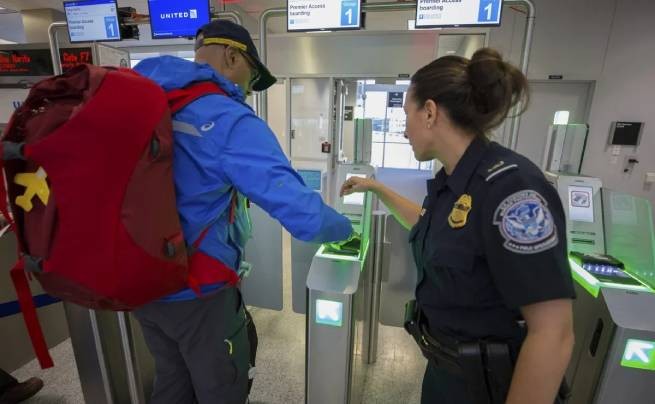At the end of 2023, the new Entry/Exit System (EES) in the European Union will become operational. How will visa rules change? When will innovations “start”, and who will they affect? About everything in detail.
Already in October, the launch schedule for the EES biometric system is expected to be made public. The new rules were planned to be introduced last year, but some difficulties were caused by the extension of the deadline – first until May 2023, then until the end of the year.
Some media outlets were quick to report that the changes would come into force only in 2025, but the European Commission denied such an assumption. EC spokeswoman Anita Hipper said:
“The Commission does not comment on speculation. The Commission remains committed to ensuring that the ETIAS rules come into force as soon as possible.”
Automated EES registration system
EES, or Entry Exit System, is an automated system for registering entry into and exit from the European Union for citizens of the UK and other countries outside the bloc who do not require a visa.
When crossing the external border EU they will need to scan their passport or other travel document at a special terminal. The changes will not apply to legal residents and long-term visa holders. The system will register the date and place of entry/exit, full name, biometric data (face scan and fingerprints). The latter will be stored after each trip for three years.
The EES will apply in all EU countries except Cyprus and Ireland, and in four non-member Schengen countries: Norway, Iceland, Liechtenstein and Switzerland. The rules are being introduced to strengthen border security and identify those who have stayed in Schengen for longer than the required 90 or 180 days. writes euronews.
A joint statement from Airports Council International (ACI), Airlines for Europe (A4E), the European Regions Airlines Association (ERA) and the International Air Transport Association (IATA) said that “increased adoption and effective use of automation at places, at border crossings, as well as funding from Member States, training staff for the management of the EU external border, especially at airports, and finally informing travelers about the changes”:
“EES will change the way the EU manages its borders. However, there are a number of issues that need to be addressed to ensure the smooth implementation and operation of the new system so that passengers do not experience disruption.”
European Travel Information and Authorization System ETIAS
EES is linked to ETIAS. The new scheme requires citizens of non-EU visa-free countries to obtain a special entry permit. It was originally planned that ETIAS would come into force in November 2023. However, the European Commission website now states that it will come into force next year. The exact date is not given. But officials had previously indicated that the system would be operational within five to six months of EES.
Travelers will need to apply for an ETIAS online before travelling, which costs €7. Once the application is approved, the electronic entry permit will be linked to your passport and will be valid for 3 years.
When will the system start working?
Why is EES still not working? Contractors who fail to meet deadlines are blamed for the delay. Automated barriers must be installed at all international land, sea and air borders of the Schengen area. Travelers must register electronically at special terminals or through mobile applications, and then border guards will complete the check. Anita Hipper says about the timing of the implementation of the new rules:
“As stated in the final document of the June meeting of the Council of Justice and Home Affairs, an updated schedule for the implementation of the entry/exit system should be presented at the meeting of the Council of Justice and Home Affairs in October 2023. After this, the start of work will be announced through official communication channels EU”.
Possible queues at border checkpoints and adjustments to the system during the implementation process
There are concerns in the UK and some other countries that the EES could lead to increased delays at border points. French authorities will implement border controls using EES at the UK port of Dover on the Eurostar and Eurotunnel lines. They are currently working with British authorities to minimize the system’s impact on capacity and traffic. However, Paris also does not exclude the possibility of queues at checkpoints.
The EC concedes that the system may have to be introduced gradually and with adjustments made to prevent a collapse at the border. The entry/exit system will be automated for citizens of the UK and around 60 other non-EU countries, with visa-free entry. Ukraine also belongs to them.







More Stories
The entrance to a high-rise building collapsed in Belgorod, how many people are under the rubble is unknown (video)
Eurovision: following the disqualification of the representative of the Netherlands (video)
Holidays in Europe will become more affordable – air tickets from Russia to the EU have fallen in price by half